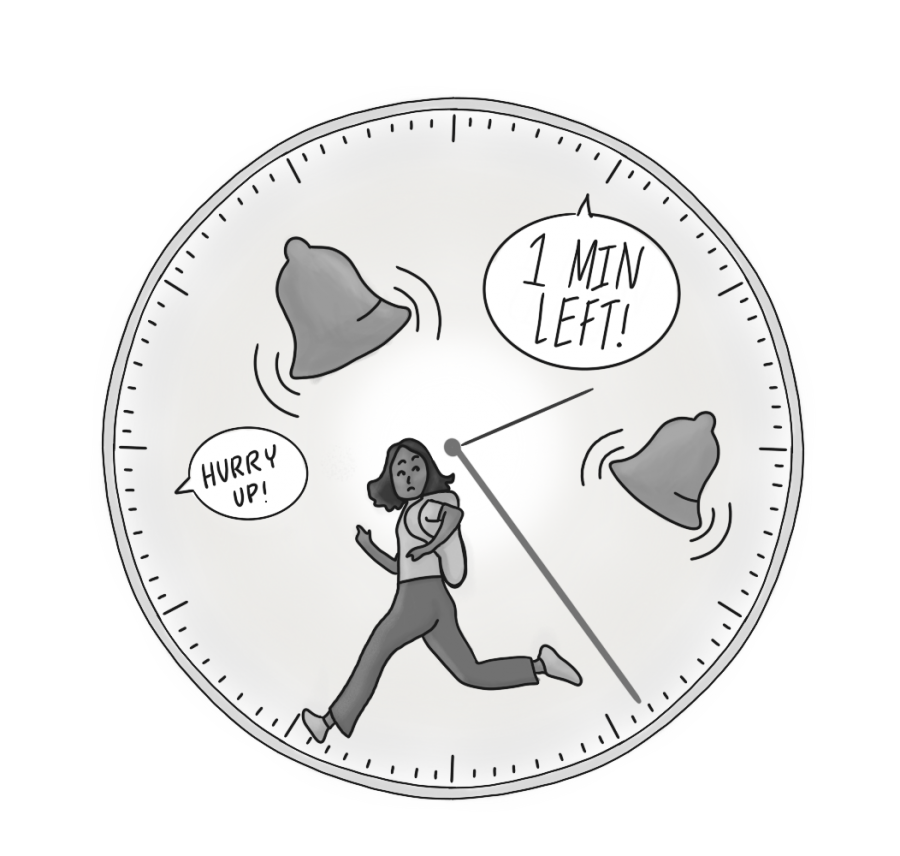OPINION: Five minute passing periods do not provide enough time to refresh between online classes
On Tuesday through Friday during the 2020-2021 school year, SCHS uses a block schedule where each class is in session for 80 minutes with only five-minute passing periods and a 30-minute lunch. Such short breaks in between long class periods are problematic and counterproductive in encouraging efficient student and teacher performance.
The amount of time spent in class or completing asynchronous work during block days can be up to 320 minutes daily compared to 45 minutes of break, which includes lunch and passing periods. With only five minutes between classes, students and teachers are unable to recharge mentally and physically before beginning another long 80 minutes of class.
The ratio of class time to break time is detrimental to student performance as many students are unable to focus during class due to the small duration of break time they receive. Additionally, some teachers may find it difficult to stay on track while teaching as they are exhausted after teaching multiple lengthy classes.
All of the passing periods combined equal only half of a lunch period. Lunch periods at SCHS are a mere thirty minutes long. Furthermore, they are scheduled to begin at 11:15 a.m., which is earlier than most students’ normal lunchtime, and may not provide enough time to make a meal, eat it, then prepare and refresh for the next class. Plenty of students and teachers miss class time because they are making or eating their food due to the inconvenient lunch scheduling.
Missing fundamental class time is not ideal within a learning environment and results in students missing important lessons, a major concern with distance learning. The five-minute passing periods allow no room for simple things such as setting up materials for the next class, using the restroom, eating a quick snack, or getting up and walking around after sitting at a desk for an hour and 20 minutes. These short breaks force people to rush themselves when preparing for the next 80 minutes.
Some may argue that the short periods are tolerable since they make the overall duration of the school day shorter compared to a standard school day. If adjusted to be longer, the passing periods would cause the overall school day to be longer by a total of between 10 to 25 minutes. The idea of this change is something many students and teachers may not be pleased with. However, while the day itself may be shorter, the work and classes are longer and harder to endure with brief five minute passing periods.
Students and teachers are not given enough of a break between their long classes, and it can be detrimental to productivity and concentration as well as mental and physical health.


